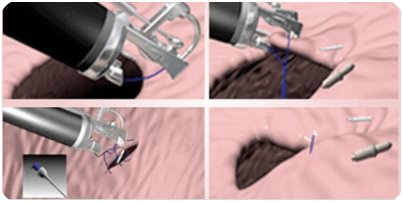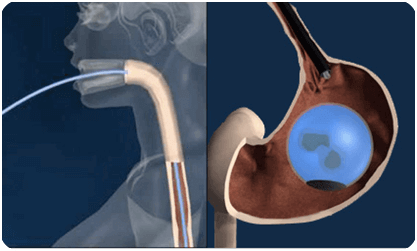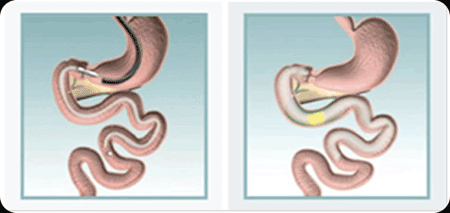Could not find what you are looking for?
Endoscopic Bariatric Surgery
Endoscopic Bariatric Surgery
The interest in endoscopic treatment of obese patients is growing as a result of the technical development of endoscopic devices and because several studies have shown that most patients do not need the substantial weight loss afforded by bariatric surgery. There are a whole range of endoscopic procedures used as weight loss treatments. With a new generation of endoscopic equipments available, endoluminal bariatric weight loss surgery is gaining popularity as well, with up to 40% reduction in excess weight loss and around 60 % resolution of co-morbidities. Few of the available procedures include intragastric balloon, primary gastroplasty, and outlet reduction for failed gastric bypass, pouch creation, and endobarrier bypass sleeve. Currently, the endoscopic procedures and devices used for the treatment of obesity are space occupying. There is a role for such devices in patients who are massively obese before consideration of bariatric surgery. However endoscopic duodenojejunal sleeve for diabetes has come as a promising alternative surgery for diabetes.
Intragastric balloon

A soft, flexible catheter assembly is used to place and inflate a balloon under direct endoscopic vision. This inflated balloon fills most part of the stomach thus giving fullness and early satiety after little food intake. Patient needs to be on overnight observation and will be discharged with diet and medication for 2 weeks duration.
Indications: Alternative weight loss treatment in moderately and severely obese patients. Used in conjunction with a supervised weight loss diet program for weight loss in obese patients as a first step to reduce the surgical risks of other procedures.
An intragastric balloon may be an option for you if:
- Your body mass index (BMI) is between 30 and 40.
- You’re willing to commit to healthy lifestyle changes and regular medical follow-up, as well as to participate in behavioral therapy.
- You have not had any previous stomach or esophageal surgery.
The placement of an intragastric balloon helps you lose weight. Weight loss can lower your risk of potentially serious weight-related health problems, such as:
- Heart disease and stroke
- High blood pressure
- Sleep apnea
- Type 2 diabetes
An intragastric balloon and other weight-loss procedures or surgeries are typically done only after you’ve tried to lose weight by improving your diet and exercise habits.
Intragastric balloons aren’t the right choice for everyone who is overweight. A screening process will help your doctor see if the procedure might be beneficial for you
Procedure: After a routine check gastroscopy, a deflated round, smooth silicon balloon is introduced into the stomach. 400 cc of saline or a combination or air or a combination of both is introduced through a self-sealing valve to facilitate simple filling. Reusable removal tools allow for deflation, fluid evacuation, capture and removal of balloon.
After intragastric balloon insertion

The patient can have small amounts of liquid starting about six hours after the procedure. The liquid diet generally continues until the start of the second week, when the patient can start eating soft foods. Regular food can be eaten around three weeks after the insertion of the intragastric balloon. Intragastric balloons are left in place for up to 6 months, and are then removed using an endoscope. Frequent meetings with members of your medical team, such as your nutritionist and psychologist, may be needed after your procedure.
Post gastric bypass, despite initial weight loss, some patients experience weight regain that may be related to an increase in the size of the gastric pouch and/or stoma. The gastroscope is used to calibrate the new anastomotic diameter. Serial endoscopic placations with 3-0 polypropylene “H” fasteners starting approximately 1cm above the gastrojejunostomy and proceeding circumferentially to approx 1cm below the gastroesophageal junction are performed. Two fasteners were placed at each location, generally spaced 1cm to 2cm apart. Following the completion of the procedure, repeat upper gastrointestinal endoscopy is performed to inspect the revised stoma and gastric pouch. Repeat measurements are taken, and the operative site is inspected for hemostasis and parietal integrity. Two fasteners are placed this helps patients to lose up to 40% excess weight that was gained or after inadequate weight loss.
Duodenal-jejunal bypass

Duodenojejunal Bypass is now gaining popularity and comes into the realm of metabolic surgery. This was originally done as a surgery to relieve the pain of patients with intestinal cancer.
But it was found that a particular section of the duodenum is actually also deeply involved in Type II diabetes. When this section of the duodenum is bypassed with surgery, Type II diabetes is often successfully cured establishing normal glucose levels.
In the Duodenojejunal Bypass sections of duodenum are bypassed via an end-to-end anastomosis. The biliopancreatic secretions are also diverted into the distal jejunum through a choledochojejunostomy, a surgical anastomosis of the common bile duct and the jejunum. As with the duodenal switch, the pyloric valve is preserved, but unlike the duodenal switch no gastric sleeve or other procedure is performed on the stomach.
A large weight loss is also a result of Duodenojejunal Bypass, because much of the absorption of food occurs in the duodenum. In other words , the Duodenal-jejunal bypass is a stomach sparing bypass of a short segment of the proximal intestine, a gastric bypass without the stomach stapling.
Duodenal-jejunal bypass has been shown to improve diabetes in both lean and obese patients. It is currently being investigated in select early human trials. Published data on a sampling of cases shows that normal-weight type 2 diabetic patients undergoing duodenal-jejunal bypass had normalized fasting blood glucose levels < 100 mg/dl. A1C dropped to < 6%, from a preoperative level of 8-9% . It is expected that this procedure might be a good alternative to the well-described safety profile of the Roux-en-Y gastric bypass.



